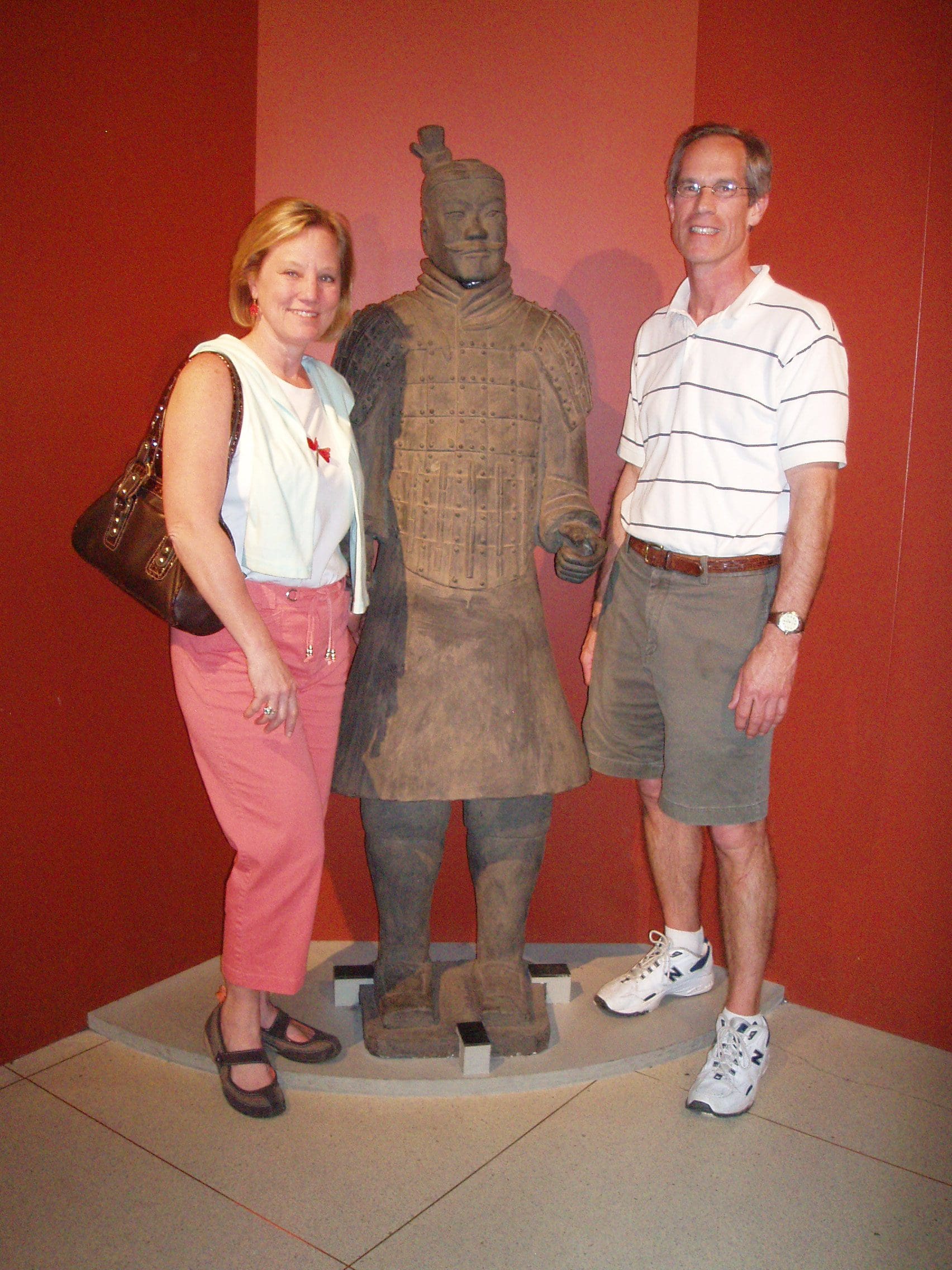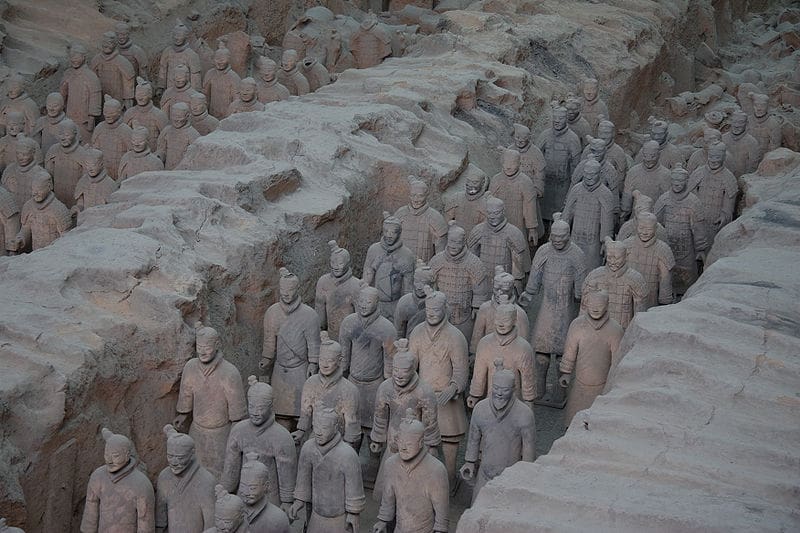Spring in Virginia is a glorious thing! If you ever have the privilege of one of those splendid Virgina sun-kissed days, by all means, spend it outside! As it happened, this gorgeous spring weather coincided with the tickets I already had to the highly desired Terracotta Warriors Exhibit at the National Geographic Museum (17th and M St.) in Washington, DC. The exhibit tickets were completely sold out for the whole week, so I was feeling pretty smart about having purchased them online in advance. Since our tickets were for 6:30 pm, we spent the day visiting all the spectacular outdoor memorials of DC. I’ll tell you about that in another blog post. Today is all about the Terra Cotta Warriors.

Qin Shi Huang, born as Ying Zheng in 259 BC, took the throne of China at the age of 13 in 246 BC. He built the first feudal and centralized empire in Chinese history in 221 BC. This is known as the Qin Dynasty. During his 15 year reign, he expanded the empire by vast margins, both geographically and in numbers of subjects. Qin’s wealth was unheard-of and he built many palaces of extreme proportions. He directed the building of his own tomb so that many treasures could accompany him to the afterlife. The royal mausoleum complex was of massive proportions and took 11 years to build. It was discovered in 1974 when a group of peasants uncovered some pottery while digging for a well.
The excavated site near Xian, China covers 16,300 square meters and includes three separate pits where over 7,000 pottery soldiers, horses, chariots, and weapons are arranged in battle formation. Archeologists estimate that 5000-7000 more exist that have not yet been excavated. Many were damaged by raiding marauders after the fall of the Qin Dynasty but thousands of pieces have been painstakingly restored. Experts have determined that eight different faces were used for all the figures, but they have seemingly infinite combinations of mustaches, eyes, eyebrows, and noses, giving the impression of individuality.

The traveling exhibit on display in DC had about a dozen warriors depicting armored and unarmored officers, archers, foot soldiers, musicians and acrobats. There were half-sized chariots made of bronze, iron, and gold that weigh 1.2 tons, hitched to horizontal quads of half-sized terracotta horses. Displays of ancient jade and weapons gave insight into the lives of those who lived many centuries ago.
Qin’s actual burial pit has not been excavated. There are historical accounts of the grandeur of the burial site that claim there was a scale model of the entire Qin empire with rivers made of mercury buried 100 feet deep. Indeed, the soil near the burial pit does register uncommonly high traces of mercury but there are no plans to excavate the actual tomb at this time. The entire burial compound was designated a UNESCO World Heritage site in 1987.
I was fascinated by the antiquity of the exhibit; these figures have lasted nearly 2200 years. The National Geographic Museum did an admirable job in creating the display. It will only be open until the end of March and available viewing slots are very limited for the rest of the time, but if you have an opportunity to visit, it is well worth the $12 ticket. Now that I’ve gotten a taste, I want to visit the original site in Xian also. Do you want to go too?






Leave a Reply